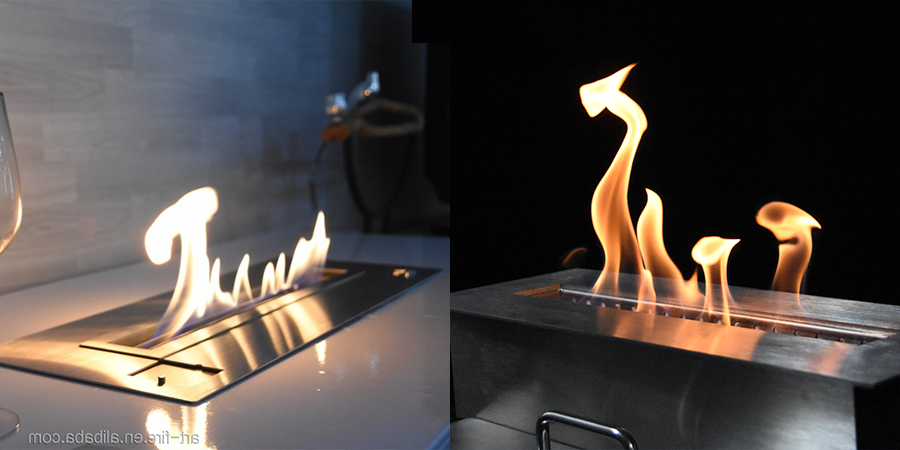Cela fait référence au brûleur de la cheminée bio et à son fonctionnement.
Les cheminées au bioéthanol sont apparues pour la première fois en 2005. L'introduction des foyers au bio éthanol a permis de placer une cheminée presque partout et sans aucune ventilation, cheminée, fumée, suie ou entretien coûteux. Depuis, la technologie et la sécurité ont évolué, Feu Ethanol Intelligent Un Feu Ethanol Intelligent n'est pas qu'un petit objet décoratif chic: Brûleurs manuels et automatiques au bioéthanol.
Ces deux types ont chacun leurs avantages et inconvénients. Ainsi, le type de brûleur que vous sélectionnez, cela dépend des exigences que vous avez pour votre cheminée, où il sera utilisé, et quel est ton budget.
Although there are only two types of bioethanol burners, les produits de différents fabricants peuvent varier et présenter des différences dans le fonctionnement de leurs brûleurs.
Feu Ethanol Intelligent Un Feu Ethanol Intelligent n'est pas qu'un petit objet décoratif chic
1. Aucune alimentation ou câbles ne sont nécessaires et il peut être monté partout.
Les brûleurs et foyers manuels au bioéthanol peuvent être installés et placés librement, car ils ne nécessitent aucune alimentation ou autre connexion par câble, il n'a pas non plus besoin d'une cheminée, évent ou conduit. Le seul facteur à considérer est la taille que vous souhaitez donner au brûleur..toutefois, tu, bien sûr, doivent toujours être conscients des risques généraux d'incendie et des distances de sécurité. Vous pouvez lire sur les distances de sécurité dans notre guide sur le sujet.
2. Les brûleurs manuels au bioéthanol sont bon marché Les foyers au bioéthanol existent depuis quelques années, avec les fabricants optimisant en permanence les coûts de production. Par ailleurs, les brûleurs manuels ne nécessitent aucune technologie numérique, et cela signifie que les prix des cheminées bio manuelles sont assez bas à ce stade.
Benefits of an Automatic Burner
1. Facile à contrôler la flamme.
Il est plus facile d'éteindre et d'allumer un brûleur automatique. Tout ce que tu as à faire, c'est cliquer sur la télécommande, le panneau de commande sur le brûleur ou via une application. Certains foyers automatiques au bioéthanol permettent également d'ajuster la taille de la flamme et de contrôler la quantité de chaleur rayonnée..
2. Capteurs de sécurité.
Un bonus supplémentaire avec un brûleur automatique, est le nombre de capteurs de sécurité, qu'il n'est pas possible d'obtenir dans un brûleur manuel. Cela peut inclure des capteurs qui surveillent les niveaux de CO2, tremblement, surchauffe, etc. Ainsi, le foyer s'éteindra automatiquement, au cas où les capteurs détecteraient des dangers.
3. Économie de carburant.
Les brûleurs automatiques ont souvent une meilleure économie de carburant en bioéthanol, puisque le combustible est uniquement pompé dans le brûleur, quand c'est nécessaire. Cela signifie qu'aucun carburant bioéthanol ne sera gaspillé lors de l'allumage et de l'extinction du foyer.. Par ailleurs, il ne s'évaporera pas non plus de lui-même si du bioéthanol non brûlé reste dans la cheminée.
Inconvénients d'un brûleur automatique.
1. Cher.
L'un des plus gros inconvénients d'un brûleur automatique au bioéthanol est le prix.. Un brûleur automatique au bioéthanol coûte beaucoup plus cher que son homologue manuel. La raison en est que la technologie utilisée dans les modèles automatiques est encore relativement nouvelle et plus avancée.. Cela signifie, cela nécessite plus de développement et d’heures de travail pour produire, et les matériaux nécessaires à la fabrication sont plus chers.
2. Nécessite de l'énergie
Pour que tous les composants électroniques du brûleur fonctionnent, il est nécessaire d'avoir un branchement électrique à proximité de l'installation de la cheminée éthanol. Cela rend l'installation moins flexible.
toutefois, certains brûleurs automatiques sont équipés d'une batterie et nécessitent donc une recharge.

Manual Ethanol Fire Burner AFM150 Inserts For Indoor Decoration ; Design Bio Ethanol Fireplace AF66 With Remote Controller For Sale - Art Fire ;
Heure de publication: 2021-11-22
